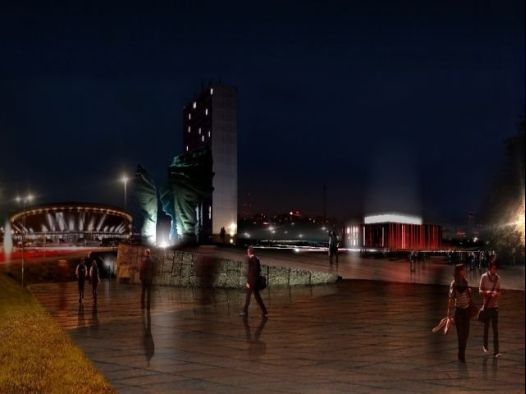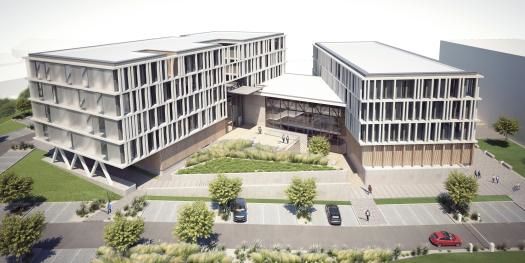WARBUD News
Media Information
On 19 January 2016 WARBUD signed a contract for renovation and modernization of the Pac Palace in Vilnius. The building is situated at 3 Šv. Jono St. (Saint John Street) in Vilnius Old own. The Client is the Embassy of the Republic of Poland in Lithuania.
WARBUD will execute the project in joint venture with its Lithuanian partner, the company LAKAJA. The scope of work covers a comprehensive rebuilding of the palace, including among others drying the building and strengthening its foundations, rebuilding of the interior, adaptation of the building to requirements of the present technical regulations, safety conditions and requirements of labour law.
The scope of work also encompasses strengthening and modernization of structural elements of the building, replacement of roof cover and structure, renovation of historic elements of the place including wall polychromy, fitting all internal systems and construction of utility networks as well as the renovation of the existing façade and renovation of the internal courtyard.
The Pac Palace is a 17th century architectural monument protected by the state. In 2007 the Palace was bought by Polish Ministry of Foreign Affairs for 33 million litas to house the following institutions: Embassy of the Republic of Poland, the General Consulate and the Polish Institute in Vilnius.
The Palace was built at the turn of the 16th and 17th centuries in the place of the former Pigulczyńska House. In the end of the 16th century the building was bought by Hieronim Wołłowicz, general staroste of the Samogitia region. In the first half of the 17th century the Palace was owned by the Radziwiłł family, then by Kazimierz Sapieha. The Pac family bought the property in mid-17th century.
In the year 1655 the Palace was burnt down during Polish-Russian war. Rebuilt after the war, it was owned by among others Piotr Michał Pac, general staroste of Samogitia, then by Michał Kazimierz Pac - Great Lithuanian Hetman and by Józef Franciszek Pac, the Samogitia Castellan. In 1764 the Palace was inherited by the last owner from the Pac family - General Lithuanian Marshal Michał Jan Pac.
In 1793 the Palace, which was in bad state, was bought by Great Lithuanian Chancellor Aleksander Michał Sapieha, who rebuilt it thoroughly in the classicistic style and gave it the present form. After November uprising in 1831 the palace was confiscated by Russian authorities in revenge for the participation in the uprising of the owner of the property - General Franciszek Sapieha. The confiscated palace was used as the seat of a Russian governor.
In 1912 the Palace was a club for Russian gentry and the seat of Russkij Mir (Russian World) restaurant. After World War II soviet authorities handed over the building to telecommunications industry employees to be used as their culture centre. After gaining independence by Lithuania the Palace was handed over to Lithuanian Post Office. In 1991 Polish Historic Building Restoration Studios (PKZ) finished renovation work in the building which had continued since 1978.
Scheduled project duration: March 2016 - August 2017






